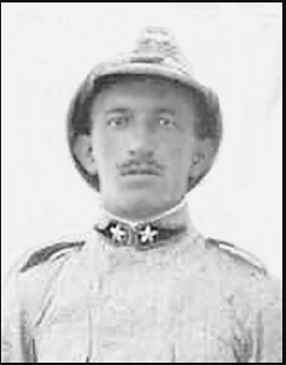
 |
Tripoli, July 25, 1912 Collection of Marco Bazzan, 1-31-06 |
from Infoplease, 2-6-06 |
via email from Marco Bazzan, 1-31-06 My grand father was in the group of the dirigible NORGE and later ITALIA . But my grandmother was about to deliver my ...father so "nonno Antonio" retired from the army. His army friends sent him some memories and only two survived to me. I will send to you those pctures. Thanks and hope to read about you (please forgive my English...) |
 |
"Escape Airships in Lybia" Collection of Marco Bazzan, 1-31-06 |
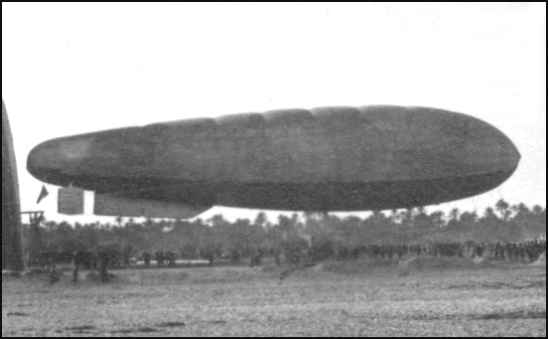 |
"Escape Airships P.2 & P.3, in Lybia" Collection of Marco Bazzan, 1-31-06 |
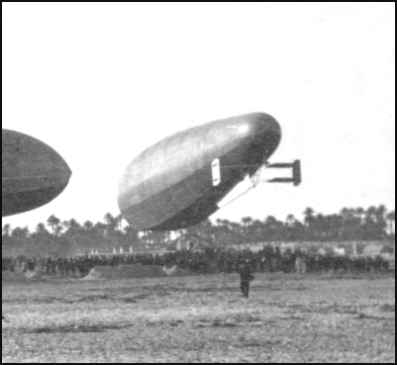 |
"Escape Airships in Lybia" Collection of Marco Bazzan, 1-31-06 |
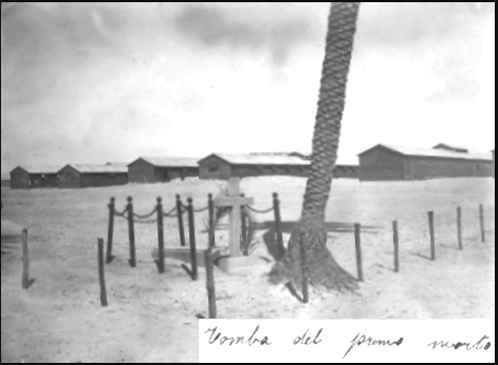 |
Collection of Marco Bazzan, 1-31-06 |
 |
STORIA DELL' AVIAZIONE (The Aviation History) Giorgio Apostolo, Giorgio Bignozzi, Baldassare Catalanotto, Cesare Falessi. Product Details Publisher: Fratelli Fabbri Editori - Milano - Italy. 1973. |
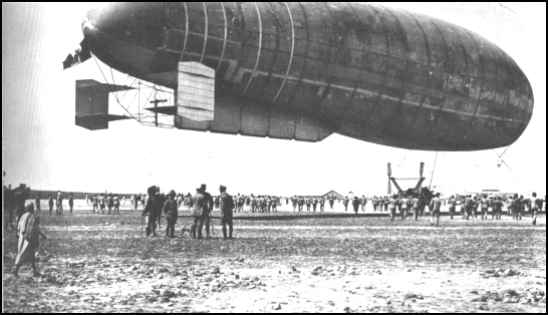 |
From Storia dell' Aviazione Courtesy of Giovanni Giorgetti, 2-7-06 |
From Storia dell' Aviazione Translation Courtesy of Giovanni Giorgetti, 2-8-06 Since the beginning of the mobilization initiated in preparation for the landing in Tripolitania and Cirenaica, the Battalion Specialist had established an air base in Brindisi, in which the airships P.2 and P.3 were stationed. P.2 was the new acronym of the N.1 of 4000 cubic meters. The P.3, the new designation of the N.2, was constructed using German heavy silk, and boasted a substantially greater volume of 4400 cubic meters. The two airships arrived in Tripoli on December 3, 1911. They were supported by a complete facility icluding two hangars, a repair and maintenance shop, a hydrogen generator, some stores of consumibles and armament and two Fiat trucks. The hangars were located in a place called the Jewish Cemetery, where the Airplane Branch had already established an operating base. However, the start of operations had to be postponed due to damages suffered by both airships during a violent hurricane, which struck during the night of December 16, which also flooded Tripoli. The need to repair the damage, which had to be done in Italy, resulted in that the airships could only be made ready by the beginning of March, 1912. The first mission of war was carried out in the Zanzuri area, March 5. On that day, the two airships carried out an intense action involving reconnaissance, including topographical or photographic surveys of the enemy territory. A crew of four persons was on every airship, three officers and an engineer, so that there were always at least two persons free from the details of navigation and therefore in a position to apply themselves to observation, to photography and to the dropping of messages. The messages, contained in ballasted bags, delivered assignments to the ground forces. The operational flight altitude had been set at 1400 meters, considered to be the minimum necessary in order to insure safety from ground fire. But in actuality, the high temperature of the area, and the heavy cargo of the airship, limited the service altitude to 1200 meters. The dropping of bombs was also an important activity, and altogether, the two airships dropped more than three thousand bombs of various types, including some incendiary. It is important to observe that the Italian airship men had correctly identified and implemented nearly all of the possible modes of action used in modern aviation. As an example, in August, 1912, an experiment of great interest was carried out, namely the location of underwater mines from the skies. It was also attempted to implement a system in order to explode the mines by means of bombs, but the experiment failed because the bombs exploded on the surface and therefore did not affect the underwater mines. Finally, in the eventuality that the Arab - Turkish forces might ultimately employ some airplanes, the airships towed shapes resembling airplanes, at the end of cables as long as 250 meters, in order to train the infantry in antiaircraft defense procedures. The experiences gained in this manner, as early as in 1912, insured later successes. |
From Storia dell' Aviazione Courtesy of Giovanni Giorgetti, 2-7-06 Fin dall'inizio della mobilitazione ordinata in previsione dello sbarco in Tripolitania e in Cirenaica, il Battaglione Specialisti aveva impiantato a Brindisi un cantiere aeronautico del quale facevano parte i dirigibili P.2 e P.3; P.2 era la nuova sigla dell'N.1ter da 4000 metri cubi, e P.3 quella dell'N.2, costruito con seta tedesca, più pesante, e quindi con capacità forzatamente maggiore, di 4400 metri cubi. I due dirigibili, con un intero parco fornito di due cannoni, officina smontabile, generatore di idrogeno, materiali di consumo e di armamento e due autocarri Fiat, arrivarono a Tripoli il 3 dicembre 1911. I capannoni furono impiantati in quella località denominata cimitero degli Ebrei dove aveva già la sua base operativa la Flottiglia Aeroplani. L'inizio delle operazioni dovette tuttavia essere rimandato per i danni riportati da entrambi i dirigibili durante un violento uragano scatenatosi la notte del 16 dicembre, uragano che fra l'altro provocò l'allagamento di Tripoli. La necessità di riparare i materiali danneggiati, ciò dovette essere fatto in Italia, fece sì che i dirigibili potessero essere pronti solo all'inizio del marzo 1912. La prima missione di guerra fu effettuata sulla zona di Zanzuri, il 5 marzo; da quel giorno i due dirigibili svolsero una intensa attività operativa sotto forma di ricognizioni e di rilievi topografici o fotografici sul territorio nemico. Su ogni dirigibile vi era un equipaggio di quattro persone, tre ufficiali e un meccanico, in modo che vi fossero sempre almeno due persone libere dagli impegni della navigazione e quindi in grado di dedicarsi alla osservazione, alla fotografia ed al lancio di messaggi posti dentro sacchetti zavorrati. Questi messaggi erano destinati ai reparti a terra. La quota operativa di volo era stata fissata a 1400 metri, considerata quota minima di sicurezza per difendersi dal tiro della fucileria, ma in realtà l'alta temperatura delle zone di impiego e il pesante carico dei dirigibili limitò la quota di sicurezza a 1200 metri. Importanti furono anche le azioni di bombardamento, e complessivamente i due dirigibili lanciarono oltre tremila bombe di vario tipo, tra cui alcune incendiarie. È sorprendente rilevare come quasi tutte le necessità e le possibilità di impiego dell'aviazione moderna siano state correttamente individuate dai dirigibilisti italiani. Per esempio, nell'agosto 1912 fu effettuato un esperimento di grande interesse, e cioè l'individuazione dall'alto di mine subacquee di blocco. Si tentò anche di studiare un sistema per farle esplodere mediante il lancio di bombe, sistema che fallì dal momento che le bombe disponibili scoppiavano in superficie e non provocavano quindi alcun effetto sulle mine subacquee. Infine, nell'eventualità che gli arabo - turchi potessero impiegare anche loro degli aeroplani, i dirigibili effettuarono il traino, con cavi lunghi 250 metri, di sagome raffiguranti aeroplani in modo di addestrare la fanteria ad un preciso fuoco contraereo. Le esperienze fatte in questo senso, sempre nel 1912, diedero buoni risultati. |


|